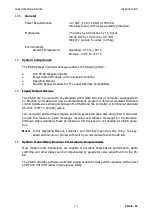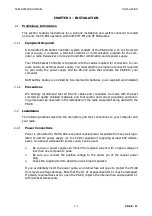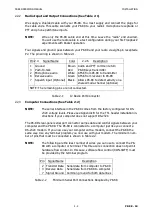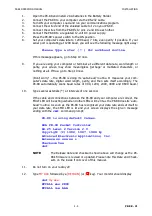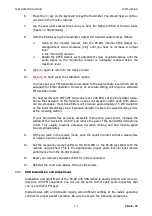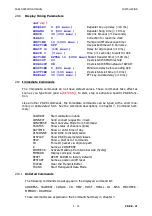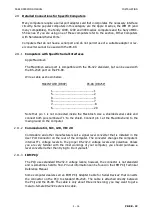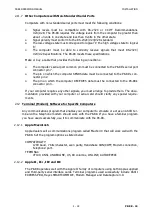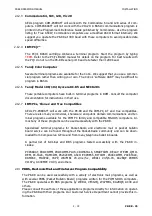
PK-88 OPERATING MANUAL
INSTALLATION
2 - 7
PK-88 - 23
During these initial checkout procedures, do not connect the PK-88's PTT and AFSK lines to
your radio until instructed to do so. Make all the other connections as described below.
After all the cables between the PK-88, your radio and your computer have been installed,
apply power to your equipment in this order: radio, computer, PK-88.
The installation procedure uses the simplest method of connecting the PK-88 to your radio,
via the radio's microphone jack. However, unless you have an auxiliary speaker-mike jack,
you may not be able to monitor the channel or conveniently use the radio on voice.
This type of connection may also be susceptible to RFI from nearby transmitters. After your
first trials with the installation routines in an initial test phase, you can consider alternate
methods shown later in this Operating Manual for permanent station installation.
Use only shielded wire for microphone audio circuits. If you notice significant hum in the
monitored audio during modulation adjustments, verify ground and shield connections in the
cable between the radio and the PK-88. The cable supplied with the PK-88 is shielded for
these applications.
This method requires a second receiver at the same site so that you can listen to your own
signal. Read the remainder of this chapter carefully before connecting the PK-88 to your ra-
dio.
In this method, the PK-88 is connected directly to the radio; initial tests are performed with-
out making any adjustments in the radio or adding any signal-level balancing devices in the
cables.
This procedure is is divided into separate sections for FM and SSB radios. Follow these steps
exactly in order to:
o
Verify that your radio and PK-88 are connected as shown in Table 2-1 earlier in this
manual, and Figure 2-1 below.
o
Connect the PK-88's AFSK audio output to your radio's microphone receptacle or
auxiliary input jack.
o
Adjust the PK-88's internal output-level control (VR1) to obtain proper modulation.
o
Take the receiver's audio output from an earphone plug or speaker jack and feed
the audio directly to the PK-88.
Insert the eight-pin connector into J2 on the PK-88's rear panel and connect the microphone
plug to your radio's microphone jack.
2.8.1
PTT (Push-to-Talk) Configuration
The PK-88 is configured at the factory for Positive PTT. This seems to work with most
modern radios. However, you can, change the polarity of the PTT configuration as
needed. Follow these steps:
o
Remove four screws from the sides of the PK-88 and lift off the cover.
o
Viewed from the front, jumper post JP5 is located at the rear left-hand side of the
board in front of J4. JP5 is a three-pin jumper post on which you install a slip-on
jumper to connect the center pin to one of the outside pins.
o
To change to negative PTT polarity, move the jumper block to the opposite center-
end pair of pins.
o
Reinstall the cover and replace the four side screws.
Содержание PK-88
Страница 1: ......
Страница 154: ...PK 88 OPERATING MANUAL APPENDIX D D 1 PK 88 154 APPENDIX D SCHEMATIC and PARTS PICTORIAL...
Страница 155: ...PK 88 OPERATING MANUAL APPENDIX D D 2 PK 88 155...








